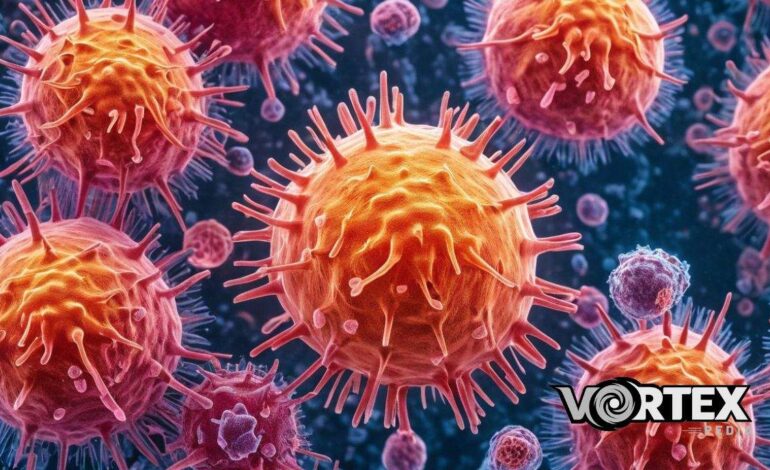
Every Information About Cancer Cell Formation
Introduction
Welcome back, friends! Hi again to another tutorial post. In this post, let me focus on what happens to a normal, healthy cell to transform into a cancerous cell and how this process is done. The major drawback of cancer is that you don’t get infected with it, it isn’t an external influence, it is a modification that occurs on your healthy cells gradually.
Cancer is a disease resulting from the malfunction of cells, and this makes it necessary to know how this occurs. Thus, our bodies are composed of a large number of cells that have a specific function in terms of their work. Under normal circumstances, cells proliferate, differentiate and undergo a cycle of cell division and death.
However, in the case of cancer, this orderly process is somehow distorted. Instead of the cycle of division and dying, the cells start to divide chaotically, which leads to the formation of tumors. These cells do not die when they are expected to and may even proliferate when there is no need for new cells.
This uncontrolled makes cell division to produce a mass of cells, which is commonly referred to as a tumor. Tumors are capable of expanding to the surrounding tissues and, in some instances, may spread to other parts of a body through a mechanism referred to as metastasis. Knowledge of how these changes occur enable the researcher or doctor to come up with better treatment or ways of preventing such diseases. In this paper, we strive to analyze the means of converting this statement, and in doing so, to reveal what is occurring in the human body when an individual is diagnosed with cancer and how it can be stopped.
The Initial Change
A cell undergoes changes, and after acquiring these changes, our body cells start behaving very badly. They start growing uncontrollably and don’t obey the rules of cell division. Ultimately, after some time, you see a mass of cells forming a tumor. But that’s not the end, that tumor can spread throughout the body by invading tissues and transferring to different layers, creating a deadly alarm for our health.
Understanding Cell Transformation
In this video, we want to talk about how these cells turn into cancerous cells. The process of a eukaryotic cell turning into a cancerous cell from normal is known as transformation. A few different modifications occur during cancer cell transformation.
Balance Between Cell Growth and Death
To understand cancer, you need to understand the balance between cell division and cell growth. Here, I’ll draw a balance: one side represents growth and the other represents death. Various cellular signaling pathways in our body dictate whether a cell should grow or die. For a normal cell to convert into a cancerous cell, growth pathways must be upregulated and death pathways downregulated.
Role of Gene Mutations
A major cause of a cell turning cancerous is the modification in the way it produces proteins. Different proteins are required for cell growth and cell death. Proteins that help the cell grow are mostly made by genes known as proto-oncogenes. Gain of function mutations in these genes produce more growth factors and proteins. Tumor suppressor genes, on the other hand, regulate growth and dictate cell death. Loss of function mutations in these genes push the cell from normal to cancerous.
Types of Mutations
Mutations in proto-oncogenes and tumor suppressor genes change a cell’s behavior from normal to cancerous. There are two types of mutations based on the extent: point mutations and chromosomal mutations. Both types can turn a normal cell into a cancerous cell.
Point Mutations
Point mutations involve changes in a single nucleotide sequence in a gene. For example, a mutation in the p53 gene, a tumor suppressor, makes it inactive. As p53 is crucial for regulating the cell cycle and inducing apoptosis (programmed cell death), its inactivity blocks apoptosis and prevents cell growth regulation, leading to cancer.
Chromosomal Mutations
Chromosomal mutations involve structural changes in chromosomes, like deletion, translocation, or insertion of genetic elements. For instance, deletion in chromosome 13 causes retinoblastoma, a type of eye cancer in children. Translocation between chromosomes 8 and 14 can lead to Burkitt’s lymphoma by altering the expression of growth proteins.
Virus-Mediated Cancer Transformation
Insertion mutations can be caused by viruses like the Avian leukosis virus (ALV), which inserts its genetic material into the host genome, disrupting regulatory mechanisms and leading to uncontrolled cell growth. Another example is human papillomavirus (HPV), which can cause cancer through similar mechanisms.
Stages of Cancer Development
Cancer develops through a series of stages:
- Induction
- Promotion
- Cultivation.
The first step that is taken is called induction. As induction, cells take genetic changes for example through gaining of carcinogens such as tobacco smoke or radiation. Such changes may alter the normal functioning of the cells and these are likely to behave in an abnormal manner. It is true that the cells germline may become mutated and this paves the way for cancer.
Promotion follows induction. The cells which have been damaged at this stage begin to divide at a fast pace. There are the initial mutations that lead to the uncontrollable division of cells, their growth rate becoming higher than normal. It results in the formation of a mass of tissues known as a tumor that is uncontrolled. Parallel to this, the growth of the nodule can lead to its forming its own blood network, or angiogenesis. Tumor develop their own blood vessels to nourish the tumor to grow further.
Metastasis is the last phase of cancer. It is in this stage that the malignant cells invade different part(s) of the body away from the primary site of cancer. The process of spreading of cancer cells to the different part of the body is called as metastasis. They circulate in the blood or lymph and then spread to other organs or tissues in the body and form new tumours. This spreading of cancer cells makes the disease more hard to cure and the handling of the condition more cumbersome.
It is useful in diagnosing and treating cancer since understanding these stages yields better results in treatment. As it is often the case with such diseases, the earlier the diagnosis and treatment is administered, the better the results.
In the more blog posts, we’ll discuss angiogenesis and metastasis in detail to understand these processes sequentially. Stay tuned!








